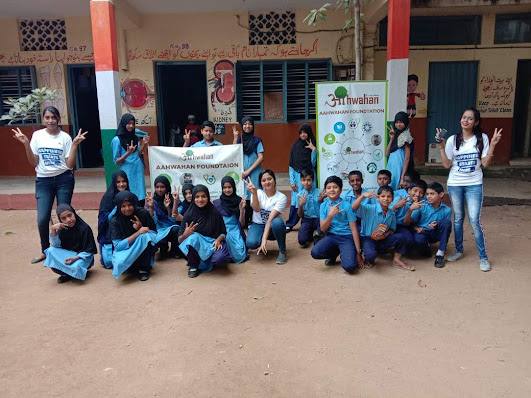Provide Free Education
Continued access to quality education can ignite far-reaching changes and provide a voice to marginalized communities globally. Aahwahan Foundation has experienced the transformational capabilities of widely shared learning at the grassroots level and witnessing the adverse impact of them not being fulfilled.
For us, the initial impetus to focus on education came from the success story of several individuals from underprivileged backgrounds who benefited from a high-quality education. We firmly believe that India’s economic miracle has been on the foundation of its high-quality Free Education. Over the years, we have witnessed a direct correlation between education and crime levels. When students stay in school longer, it had boosted education and decreased crime. Statistical evidence confirms that crime rates peak at age 18, and keeping teenagers in school during this critical phase can ensure that they do not progress in the wrong track.
There have been several inspiring stories demonstrating the impact of education on the lives of people every day, none more than the story of Sharath Babu. He is an inspiring entrepreneur who dreamt big and qualified himself while living in a slum. Sharath was born in a slum in Chennai. His mother did several jobs, including preparing idlis, which Sharath used to sell on the streets before going to school. He graduated from BITS Pilani on a Tamil Nadu government scholarship and worked for three years in Polaris Software. Realizing his natural flair for management, he was determined to pursue a degree in management from a prominent institute. After completing his MBA from IIM- A, instead of taking a high paying job, he started his own catering business, “Foodking.” His vision was to employ illiterate and semi-illiterate people. The World Bank recognized his achievements by inviting him to “The Global Youth Conference 2012. It is genuinely a rag to riches story of an individual who was able to scale up and transform the lives of people around him through the power of education.
Academic research has demonstrated the probable high return to Schooling and the role that human resources play in economic progress. However, the disconnect between education’s promise and reality becomes evident against the background of the low quality of education. That’s when we realized that Schooling is not the same as learning. Skill development is vital. A student’s progress in learning must be measured, and often the problem is hidden. Schooling that does not translate into learning is a great injustice. The children whom society is failing the most are the ones who need educational support the most.
Our activities at the ground are across several states, including Odisha, Karnataka, Assam, Bihar, and we aim to expand our operations pan India shortly. We focused on prioritizing learning and mobilizing every accessible resource to work toward it. We have identified three main dimensions of the learning crisis.
Education Infrastructure:
“ADOPTING A PUBLIC SCHOOL TO ESTABLISH AND SCALE UP ITS BASIC INFRASTRUCTURE”
School buildings, classrooms, drinking water, and sanitation facilities are critical elements of schools' learning environments. There is enough evidence that high-quality infrastructure promotes better student results and decreases dropout rates. Facilities can be considered inadequate in several ways, including being over-crowded and lacking sufficient sanitary facilities. The health repercussion of inadequate/unhygienic toilets and sanitation are severe. Girls drop out of school if the facilities are not enough. Older primary-age girls will not attend school after they begin menstruation if sanitary facilities are inadequate or non-existent.
There is a misconception within society that schools in urban settings have excellent infrastructure. However, the reality could not be further from the truth. We have witnessed the dilapidated condition of schools in an urban environment (Both Public and private).
Note : This content copy from wordpress.com


Comments
Post a Comment